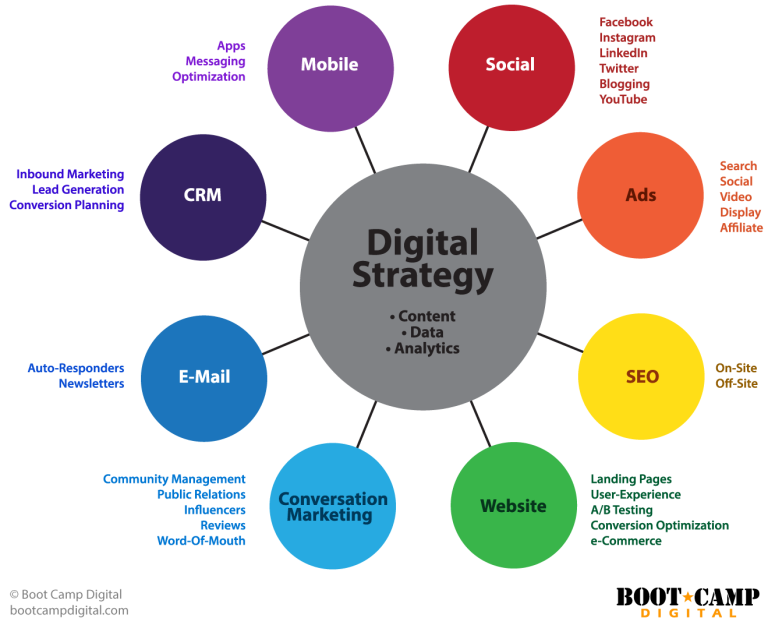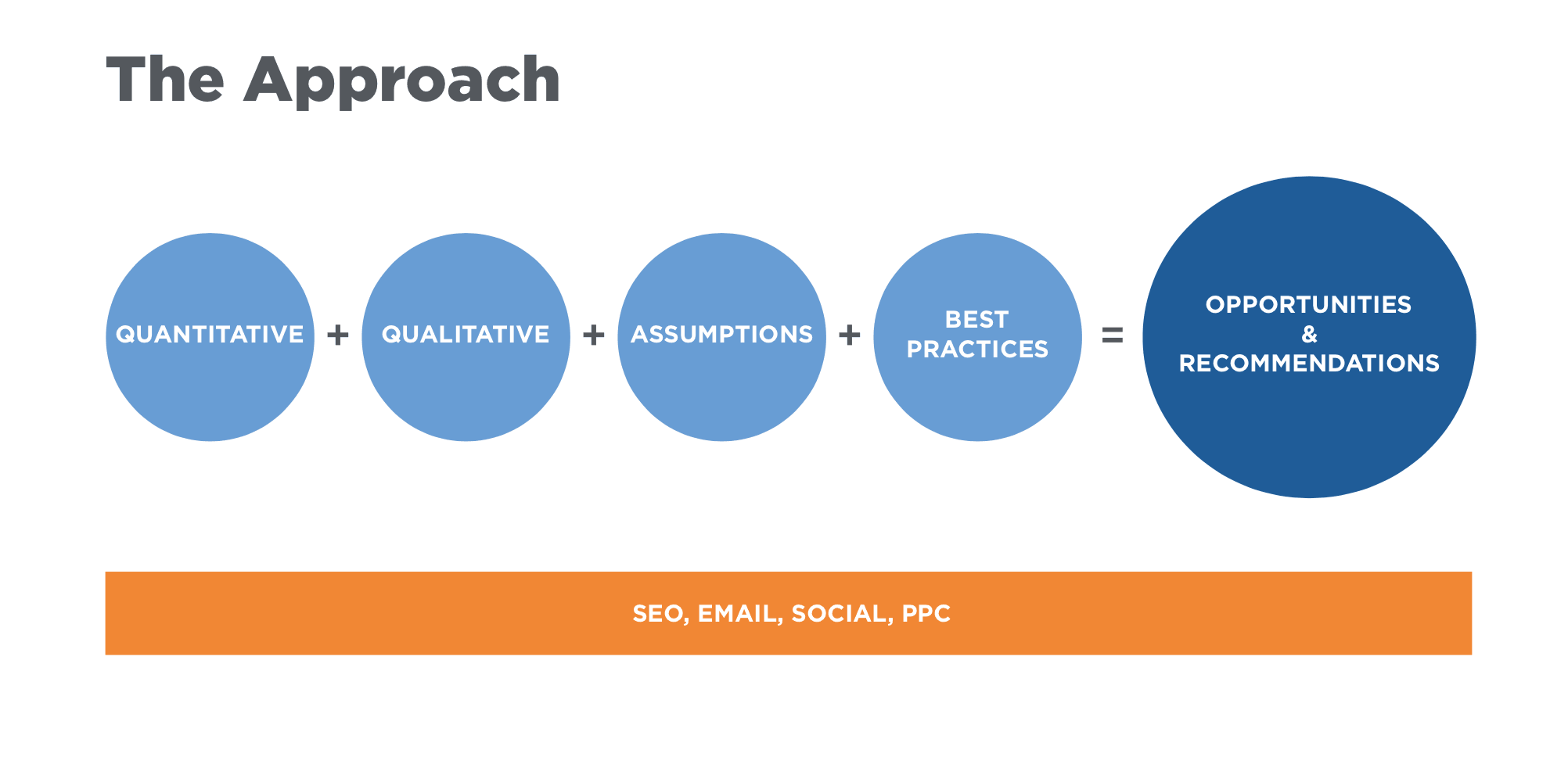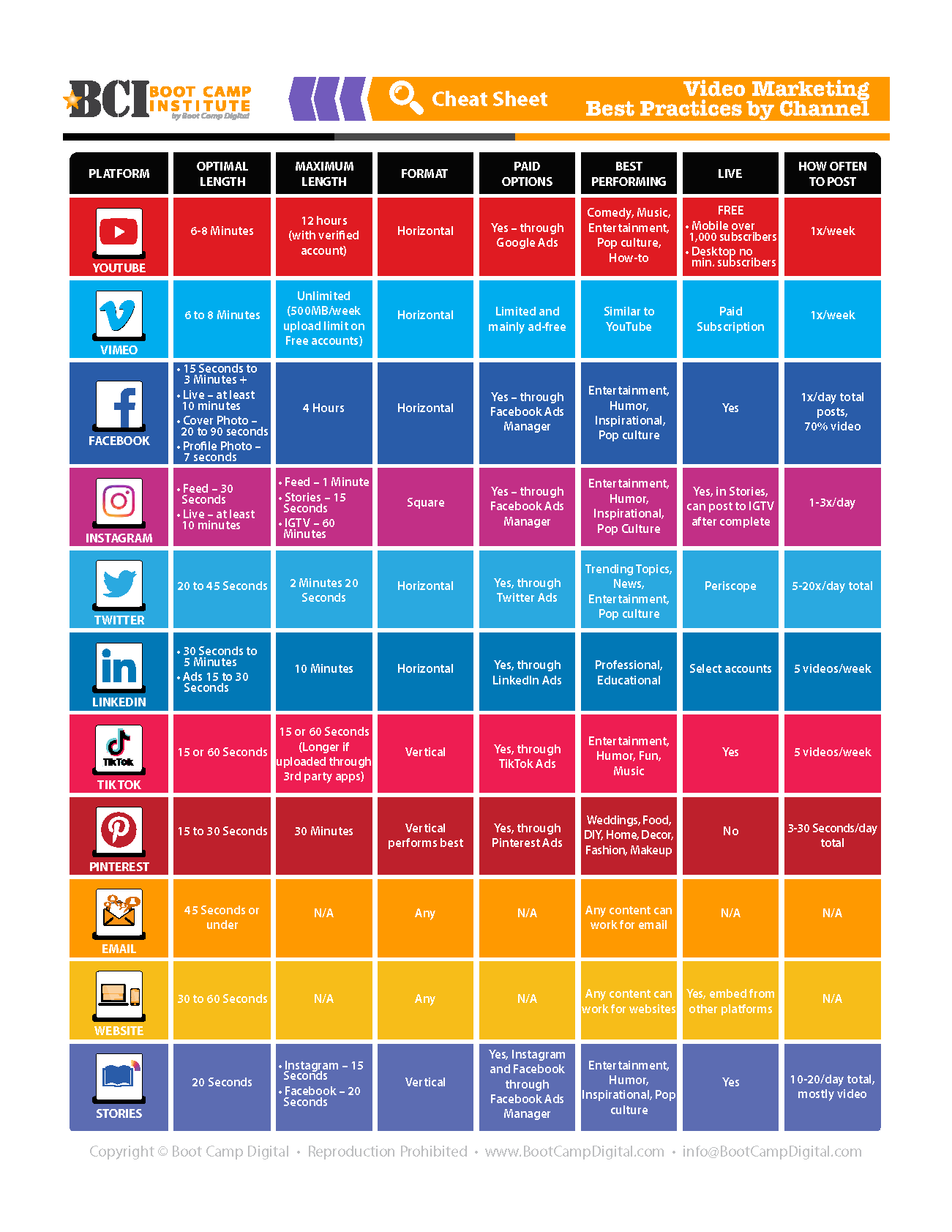Web 3.0 is here. Have you considered a social media audit?
Look in the mirror and ask, “Is my social media stuck in a Web 2.0 world?”
A social media audit is like a health and wellness check-up for your brand’s digital marketing results, business outcomes, public relations, and brand awareness.
Here are 12 tips for conducting a social media audit in a Web 3.0 world.
1. Schedule It
Instead of waiting until a potential problem is detected or failing results appear, proactively schedule an audit for your brand, a quarterly checkup, and an annual exam.
A social media audit will create an efficient and actionable update to an existing social media plan or a reset to a new social media strategy.
Social PR Secret: Keep your team accountable and transparent by scheduling the social media audits on a calendar with all stakeholders invited.
Follow the SMART method of goal setting when it comes to social media audits. Keep it.
- Specific.
- Measurable.
- Attainable.
- Realistic.
- Timeframe.
Like any action item tied to successful outcomes, it is important to access your social media audit’s requirements including:
- Create a timeframe. Set aside a realistic amount of time to complete the audit.
- Allow for research into new technologies and innovation.
- Know what resources are needed to complete the social media audit.
- Understand what team members or outside consultants need to be involved in order to achieve a successful social media audit.
2. Include PR, SEO & PPC, And New Innovations Of Web 3.0 In The Audit
Working remotely or living behind closed doors in the social media marketing room leads to dehydration and loss of healthy nutrients in a social media marketing plan.
Public relations, search, and PPC will add depth, optimization, and vital content to a social media plan.
Combining marketing agendas gives a sense of synchronicity and supplements social media planning with aligned business goals and objectives.
The emergence of Web 3.0 technology and innovation is impacting all areas of digital marketing including social media.
Web 3.0 is defined as the next generation of the internet only operating in a more decentralized environment.
This means marketers and brands can be less reliant on big techs, like Google and Facebook, and focus more on community, creators, and even crypto.
Social media marketers should have a third eye on new social networks bubbling up from Web 3.0, NFTs, virtual worlds, and how physical worlds blend with digital worlds.
“It’s also important to consider if all of your digital marketing is connected with your social strategy by evaluating relative to the digital marketing landscape,” says Krista Neher, CEO, and Founder of Boot Camp Digital.
 Image source: Boot Camp Digital – Digital Marketing Training
Image source: Boot Camp Digital – Digital Marketing Training3. Grading Scale
A process and methodology for a social media audit are essential for long-term success and efficiencies.
Whether it’s your own process using Excel, a template from a third-party source, or a platform such as Sprout Social, using consistent methods puts science behind the historical comparisons.
Considering 45% of content professionals say they’re challenged with managing content production workflow, Sarah Collins, Chief Marketing Officer at Landscape Management Network, shares her approach to a social media audit.
 Screenshot taken by author, March 2022
Screenshot taken by author, March 20224. Headlines & Grades
“We start with competitors and look for ‘who’s to beat.’ Then we write the headline for what each competitor’s strategy appears to be. We map it on a quadrant to determine the white space for the brand we represent,” says Collins.
Taking the quantitative and qualitative factors, Collins breaks down a social media audit approach like this:
- Quantitative considers competitors, community size, engagement, native channels (including Meta insights, analytics), and paid channels (such as Iconosquare, Cubeyou, Nuvi, Rival IQ).
- Qualitative analysis content, paid social via Rival IQ, and engagement.
Looking at your competitors on social media, see what they are missing and what you can do that they are not doing.
 Screenshot taken by author, March 2022
Screenshot taken by author, March 20225. Website & Blog Assessment
Check the relevant website and blog pages to check for social media factors, including:
- Shareability.
- Meta titles and descriptions.
- Formatting.
- Keywords.
- Visuals.
- Content performance.
- Links.
- Accessibility.
- Integration with paid media.
- Behavior.
- Security and privacy.
Questions To Ask
- Do you have a newsroom to feature media coverage and press releases on your website?
- Are your blog posts and pages easy to share?
- Do your titles and descriptions make sense in a share?
- How about those visuals? Are they shareworthy or boring?
- Have you experimented with the most popular types of content: videos, reels, augmented reality, filters, avatars, and Artificial Intelligence-enhanced content?
- What is the best performing content? (You might be surprised and want to rework the content strategy.)
- What is the top-performing social media network in Google Analytics?
- Are you integrating chatbots into your home page?
- Is there a place for 3D or immersive content?
6. Social Media Channel Review
This is where you want to review each channel, including this checklist:
- Page/profile optimization.
- Cover and profile image use.
- Visual assets.
- Video optimization (i.e. playlists, featured, etc.).
- Frequency and timing.
- Content types/mix.
- Comment sentiment and response time.
- Live video use.
- Engagement.
- Branding.
- Optimization.
- Chatbots and messenger use and strategy.
- Augmented reality use.
- Virtual reality.
- Creator coins.
- Web 3/NFT marketplaces such as OpenSea.
- Audio experiences such as Twitter Spaces and Clubhouse.
- Community platforms such as Discord.
- Security and privacy.
Integrate social media with your email marketing strategy.
Optimize email marketing by running retargeting campaigns. Share your email newsletter content on social media, including social media share opportunities within email marketing content.
Explore metaverse types of channels, including:
- Spatial.io.
- AltspaceVR.
- Horizons Worlds.
Tap Into Employees On Social
Don’t neglect to audit your customer-facing employees’ LinkedIn profiles.
Are they representing the brand well? Are they posting valuable content and building meaningful relationships?
“It’s no longer enough to focus on your company pages alone. You need to equip your team with the right strategies to build their personal brands on LinkedIn,” says Mandy McEwen, Founder & CEO of Mod Girl Marketing and Luminetics.
Considering four out of five LinkedIn members drive business decisions, LinkedIn is a gold mine right now for B2B organizations. The brands leading the pack to invest in building a tribe of industry thought leaders.
“I like to see how they handle the customer service on social media feeds,” says Melissa Fach, Lead SEO Content Manager at Kelley Blue Book & Autotrader.
Fach adds, “Many brands are using chatbots and Messenger wrong. They respond to everyone the same way. Chatbots will be a huge problem in the future if brands don’t start paying attention. Right now, it may look like they don’t care.”
Social PR Secret: Consider adding a chatbot strategy or SMS to your audit checklist.
See what the competition is doing and how you can improve social customer service, better serve website visits and improve messaging outreach using chatbots.
Social VR Secret: Consider investing in an Oculus headset and start exploring virtual worlds and landscapes to see where virtual reality content fits your social media strategy.
7. Competitive Social Media Review
Compare your brand’s social media channels with at least two competitors or like-minded brands.
Create a spreadsheet and make notations of:
- Publishing trends compared to competitors.
- Creative.
- Frequency.
- Content types.
- Influencers.
- Engagement.
- New social networks.
- New technologies.
- Use of Artificial Intelligence.
- Virtual worlds.
- Employee/team personal brands relate to your business brand and how they influence social media positively or negatively.
8. Content Style, Messaging & Optimization Analysis
This is an opportunity to see how well your content feeds social media results. Look at the overall content style and brand voice.
- Is your content robotic and informal, or is it personalized and conversational?
- Does your content reflect a strategic content calendar, or are you winging it?
- Are you using hashtags effectively to maximize reach?
- Is your social team considering trends?
- Are you paying attention to the latest features, bells, and whistles being introduced by channels? Make sure you are not using what worked last year versus what is performing the best this year.
- Be sure to claim social media profiles as new networks pop up so you can control the brand name on each channel.
Look at each social media network as its own search engine.
Social PR Secret: Brands need to optimize for each social media channel just like they would optimize using keywords, links, and images for Google.
Treat each channel like a search engine and optimize your content, images, video, and profiles.
“I look to see where social shares lead to,” says Fach.
“Is it helpful content versus something salesy? Offer a solution that will help the person – most brands make a promise and lead the audience back to misleading content. Avoid the bait and switch type of social content.”
Persona Review
When conducting your persona review, you might find your brand does not have any persona. Now is the time to add personas to your social media marketing regimen.
Every brand usually has several types of audience personas to target. If you don’t have personas, start with a template from xtensio or Hubspot.
Social PR Secret: Have a persona review with your team. Add insights, interests, and more details to make each persona as authentic as possible.
Remember to have one of the personas represent your brand’s targeted journalists, reporters, and media influencers.
Metaverse PR Secret: As we enter the Web 3.0 era, consider creating avatars to represent and interact with each persona (companies like Genies) or even as easy as using Bitmojis and Facebook avatars to interact and engage with your personas in a meaningful way.
9. Social Media Distribution & Publishing Assessment
Brand to self: “I’ve created amazing social media content! The only problem is it’s not getting exposure, reach, or results.”
Check to see the content channels and ensure the channels line up with your audience.
Consider additional distributions such as:
- Press Releases.
- Medium.
- LinkedIn.
- Guest posts.
- Events.
- Conferences.
- Trade shows.
- Webinars.
- Lives.
- Podcasts.
- Audio experiences such as Clubhouse, Twitter Spaces, and Discord.
- Communities such as Facebook Groups and Discord Servers.
“Make it easy for your team to share social media posts to their personal social media accounts, particularly LinkedIn and Twitter,” says McEwen.
Your employees’ personal social media channels are an overlooked distribution channel that can dramatically impact social ROI.
Social PR Secret: Content distribution is a critical step in social media success.
Many brands publish once and move on to the next piece of content. Guy Kawasaki’s famous advice for social media distribution is to publish, rinse, and repeat.
10. Visual Asset Audit, Including Video and 3D
Today’s social media visual trend mix includes all of the following:
- Live video.
- Vertical video.
- Square images.
- Stories.
- GIFs.
- Memes.
- Infographics.
- Augmented reality content.
- Lenses.
- Filters.
- Text overlay on images.
- Filtered images.
- NFTs.
- Virtual worlds.
- Digital goods and advertising.
- Avatars.
- PFP (picture for proof) and profile pic.
- Livestreams in digital experiences.
- 3D content on social and websites using platforms such as Threedium.
Make sure your video is optimized for each channel. Check out this cheat sheet for digital video optimization.
 Image source: Boot Camp Digital – Digital Marketing Training
Image source: Boot Camp Digital – Digital Marketing TrainingMatch up today’s social media trends as to what is working and trending compared to your brand’s use of visuals.
Are you behind the times? Using last year’s famous trends? Are you keeping up with the Web 2.0 transition to Web 3.0?
Now is the time for a visual facelift to stay up to speed on what your audience is expecting and engaging in.
Sift through the trends and compare your visuals with this checklist:
- Types.
- Optimization (i.e., alt tags, titles, descriptions, playlists).
- Web/blog visuals.
- Social.
- Stories.
- AR/VR.
- Metaverse.
- Virtual worlds.
- Virtual events like Fashion Week in the Metaverse.
- Emerging tech such as virtual beings, holograms, NFTs, avatars, and using artificial intelligence.
“Make sure to keep your team up-to-date on the latest digital marketing,” says Neher. “Social media is always changing and evolving, so invest in yourself and your team with training, conferences, and events.”
Social PR Secret: Social media and digital marketing skills are the #1 in-demand skills for marketers. Investing in your skills future-proofs your career.
11. Dig Deep & Set-Up Accurate Tracking
You’ve got to be real when it comes to social media auditing.
Social media is full of “fluffy” metrics, such as likes and comments, commonly known as vanity metrics. These metrics types don’t really tell us a whole lot of meaningful insights.
“If you’re looking to dig a bit deeper and correlate actual ROI and money being made because of your social media efforts, you need to get nitty-gritty when defining your goals and metrics on social,” says Ashley Ward-Segura, Vice President Of Global Operations at TopHatRank.com.
One of the best ways to track an actual purchase from a social media post is to do any of the following:
- Use UTM codes within your social media posts with shortened links to product pages.
- Track the referral source in Google Analytics or Semrush.
- Create a unique promo code that you only share on a social media network. (Make sure you use a unique one for each social media network to track which network gives you the most purchases.)
- Leverage the power of QR codes.
Maybe purchases aren’t your thing, and those 500 likes are the gold mine for your business. That’s totally fine!
What’s important is defining a realistic goal, something actually measured from social media, and giving yourself a realistic timeline to do so, says Ward.
Let’s not forget that not everything is quantitative – there is the power of qualitative data.
It’s called “dark social,” meaning not everything in social can be tracked. Just because it’s not trackable does not mean it is not happening or having an impact.
12. Third-Eye Chakra
Consider bringing in a third-party outside source to review or facilitate a social media audit.
This independent insight can unlock fresh perspectives and ideas while also identifying problems and blocks your in-house team might not be able to see.
“We often conduct social media audits for brands already doing a great job,” says Neher.
“The outside perspective allows businesses to better benchmark and get a fresh set of eyes. Even businesses already doing a good job benefit from expert advice.”
A thorough analysis of the data is also key, says Neher. A strong social media audit from an outside consultant should include the following elements:
- A clear understanding of the business goals, objectives, and strategies.
- A deep dive into the analytics to review performance to date.
- Competitive analysis and data to support performance vs. competition.
- Industry expert best-practices assessment to determine opportunities.
- Addition of new trends and features to enhance results and performance.
Conclusion
Get on the scale, and see how your brand weighs in.
Are you overweight on Web 2.0 and lacking any muscle in Web 3.0?
This could be a social media health issue.
Brands that choose not to adapt to the rapid innovative changes moving away from the reliance on big techs like Google, Facebook, and Apple will have a lower survival rate.
Keeping your social media marketing healthy creates the most opportunity for audience retention and attention.
This is the Web 3.0 era of the social media community, creators, and utility.
It’s where your audience has more of a say so in your success than you do.
Adapt or die.
More Resources:
Featured Image: apghedia/Shutterstock
